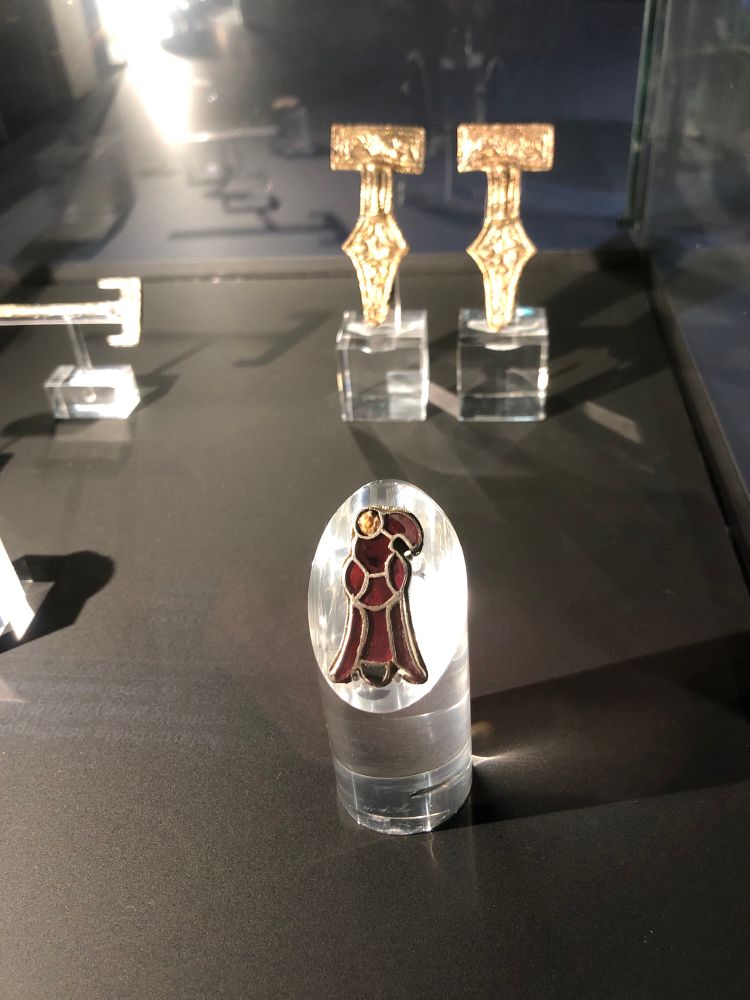
Writing about imperial women to understand late antiquity:
history - ideology - dynasty - violence - agency - memory
Also working on: crime, punishment, prosopography, digital humanities, and the city of Rome
@dependencybonn.de ..
more
Writing about imperial women to understand late antiquity:
history - ideology - dynasty - violence - agency - memory
Also working on: crime, punishment, prosopography, digital humanities, and the city of Rome
@dependencybonn.de
Julia Hillner is Professor for Dependency and Slavery Studies at the University of Bonn. She was previously Professor of Medieval History at the University of Sheffield. She is an expert on late antiquity, applying digital methods of social network analysis to large data sets drawn from a wide variety of late antique and early medieval sources. .. more

Huge thanks to @bnduman.net & @laurahartmann.bsky.social
Take a look, the variety is mindblowing!
www.dependency.uni-bonn.de/en/research/...
Reposted by Julia Hillner

listen.uni-bonn.de/wws/subscrib...
Reposted by Charles West, Julia Hillner

#Intermediaries #Christianity #Visigoths
@unibonn.bsky.social @dfg.de
Reposted by Scott G. Bruce, Pauline Stafford, Julia Hillner

So begins the speech of the slave character Pantomalus in the Querolus, the only extant late antique comedy.
It will feature in a slavery sourcebook that we are working on.
Read more in our newest blog post: tinyurl.com/zrmc4a6s
Jokes aside, it does pay off knowing a bit about the centuries post Roman rule to understand the Romans!
Reposted by Julia Hillner
So begins the speech of the slave character Pantomalus in the Querolus, the only extant late antique comedy.
It will feature in a slavery sourcebook that we are working on.
Read more in our newest blog post: tinyurl.com/zrmc4a6s

onlinelibrary.wiley.com/doi/10.1111/...

Thank you also to @dependencybonn.de for funding the conference during which many of these ideas were first discussed.

onlinelibrary.wiley.com/doi/10.1111/...
Reposted by Charles West, Rory Naismith, Julia Hillner
New research published by Robert Portass, Peter Sarris and Caroline Goodson (@cjg70.bsky.social) now offers a critical response to Wickham’s ideas ⬇️
Reposted by Charles West

It was such a joy reading it and discussing it back in the summer at the book launch.
Go read it or perhaps, given the length, browse it - you will never think about the Nicene creed in the same way again.
Reposted by Charles West, Holger Nehring, Julia Hillner


Reposted by Lesley A. Hall, Julia Hillner

onlinelibrary.wiley.com/doi/10.1111/...
Reposted by Julia Hillner

@kim-todzi.de @writinghelena.bsky.social #skystorians
Reposted by Andrew Jacobs

Time to repost
writinghelena.wordpress.com/2019/01/08/t...

Not sure these are originals though as they seem very shiny.
Also from Stadtmuseum Erfurt


Here some objects from Ostrogothic Italy found in then-Thuringia, perhaps arrived there when or after Theoderic’s niece Amalaberga married Thuringian king Hermanifrid in 507
Now in Stadtmuseum Erfurt
Reposted by Julia Hillner

The BCDSS is inviting applications for the Heinz Heinen Fellowship Program 2026/2027.
📅 Apply by Jan 10, 2026
📍 Start date: from Oct 1, 2026
👉 Full details here: buff.ly/8aH1Fy0
@unibonn.bsky.social
@dfg.de



